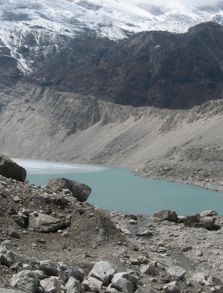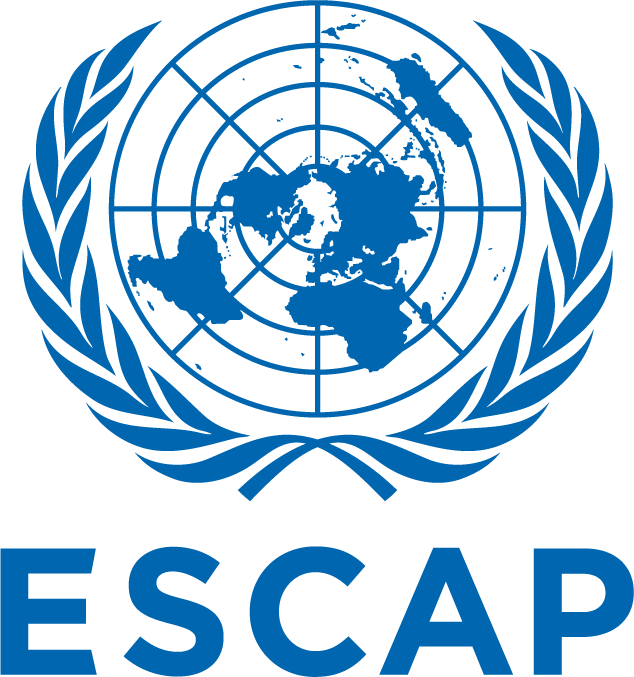
On 7 February 2021, the Nanda Devi glacier broke off in the Indian state of Uttarakhand, in the outer western Himalayas. At least 61 people were killed and around 143 are still missing. This disaster is not unique. In June 2013, the adjoining town of Kedarnath witnessed a cascade of devastating floods and landslides that killed more than 5,700 people and caused large-scale destruction of bridges and roads, which left about 300,000 pilgrims and tourists trapped in the valleys for many days. Such Glacial Lake Outburst Floods (GLOFs) pose a serious threat to mountainous communities across Bhutan, India, Nepal and Pakistan; from the Himalayas to the Caucasus, Pamir, Hindu Kush-Karakoram and Tien Shan mountain ranges.
Glacier bursts are a cascading risk
Cascades of glacier bursts, cloudbursts, heavy rainfall and subsequent landslides are becoming more frequent and complex. The breaking of the Nanda Devi glacier triggered a landslide, avalanche, deluge, and flash floods in the intricately linked tributaries of the Ganga river. The floodwaters destroyed two hydroelectricity projects, trapping workers in tunnels. Many mountainous communities are at risk of similar cascading disasters, as they live within multi-hazard risk hotspots characterized by ecological fragility, active seismicity, high infrastructure exposure and socioeconomic vulnerabilities.
Climate change impacts are evident
A comprehensive study using 40 years of satellite observations across India, China, Nepal and Bhutan, indicates that glaciers have lost the equivalent of over a vertical foot and half of the ice each year since 2000 -- double the amount of melting that took place from 1975 to 2000. The study is the latest credible analytical finding on the impact of climate change on the Himalayas' glaciers, including the Garhwal range of Uttarakhand.
Shifting from managing disasters to managing risk is the key
The Sendai Framework presents a paradigm shift from managing disasters to managing risk. This must be operationalized in multi-hazard risk hotspots like the Garhwal Himalaya, where people’s livelihoods, health, cultural heritage, socioeconomic assets and ecosystems, are under threat. The Sendai Framework identifies four strategic actions required for managing cascading disasters in multi-hazard risk hotspots:
Understand the risk of cascading disasters: The breaking of the Nanda Devi glaciers reflects an emerging and growing trend of cascading disasters. While there is considerable research on the seismic and climate aspects of the risk, we must strengthen the understanding of the impacts of rapid urbanization and development of critical infrastructure in the fragile Himalaya regions.
Strengthen risk governance in fragile terrains: Disaster management authorities from national, provincial and district levels all responded to the landslides and floods triggered by the glacier burst. This governance structure was established through a 2005 Disaster Management Act which has been upgraded to align with the Sendai Framework. However, the response was restricted by the remote location, fragile terrain, and limited information regarding this risk scenario. Technologies such as social media platforms, drones, aerial and satellite-based surveillance were deployed to strengthen risk governance and to reach out to at-risk communities.
Build resilient infrastructure in multi-hazard risk hotspots: Mountain regions are often understood as a site of conflicting interests between economic development and environmental conservation. However, the destruction of two hydropower projects in the glacier burst demonstrates that the two are interdependent; water-related infrastructure installed in mountain regions must be risk-informed to prevent cascading disasters. This echoes another disaster in July 2018, when a hydroelectric powerplant in Attapeu province of Lao PDR broke and resulted in massive flash floods and landslides that spilled over to Cambodia. The Coalition of Disaster Resilient Infrastructure (CDRI) is an important initiative on developing disaster-resilience in ecological, social, and economic infrastructure with substantial changes in member countries' policy frameworks and future infrastructure investments in multi-hazard risk hotspots.
Enhance preparedness for responding to cascading disasters: The Uttarakhand glacier burst highlights the challenge of responding to cascading disasters. To date, scores of people remain missing in the wave of water, silt and debris that swamped the rivers and tunnels in the hydel power project. The sequence of events that led to this was hard to predict. Early warning systems must therefore be strengthened with dense sensor networks and online data platforms, so that warnings can reach key stakeholders and at-risk communities.
The Asia-Pacific Disaster Report 2019 identified the region’s risk hotspots and recommended that regional co-operation mechanisms should be shaped based on shared vulnerabilities and risks. Accordingly, the recent Special High-Level Event of ministers from South Asia requested ESCAP in partnership with SAARC to facilitate the development of a new regional framework and strategic action plan that will strengthen member States’ management of cascading risks from natural and biological hazards through subregional cooperation. This will shape a longer-term, holistic, coordinated and more strategic approach to building disaster resilience aligned with the SDGs, the Paris Agreement, and the Sendai Framework for Disaster Risk Reduction.


